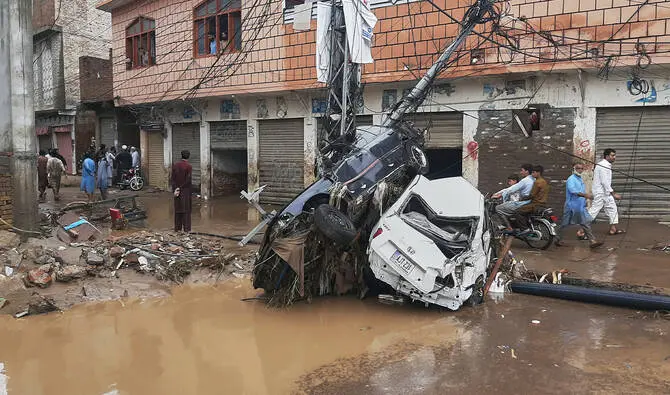
Pakistan’s deadly floods kill 320+, erase villages, and spark urgent rescue efforts
Pakistan Monsoon Catastrophe Leaves Over 320 Dead – In what survivors are calling “the end of the world,” Pakistan has been struck by one of its deadliest monsoon disasters in recent memory. Torrential rains triggered flash floods across the northern province of Khyber Pakhtunkhwa, sweeping away entire villages, killing over 320 people, and leaving thousands displaced. The destruction is widespread, the grief palpable, and the urgency for global aid more pressing than ever.
Villages Vanish Overnight: The Human Toll of Nature’s Fury
The floods, which began with relentless rainfall on August 14, intensified rapidly, catching communities off guard. In Buner district alone, at least 184 people were confirmed dead. Shangla, Swat, Mansehra, and Bajaur districts have also been declared disaster zones, with homes, schools, and roads obliterated by the deluge.
Survivors recount scenes of horror. Azizullah, a resident of Shangla, described the moment the flood hit:
“I heard a loud noise as if the mountain was sliding. I rushed outside and saw the entire area shaking, like it was the end of the world.”
Mass funerals have taken place across the region, with families mourning in front of rows of bodies wrapped in blankets. In many villages, residents still don’t know who among them has survived. The emotional trauma is compounded by the physical isolation—washed-out roads and landslides have cut off entire communities from rescue teams.
Rescue Under Siege: Battling Nature and Time
More than 2,000 rescue workers, including Pakistan Army personnel, are engaged in operations across nine districts. But the challenges are immense. Washed-out roads, collapsed bridges, and ongoing rainfall have made it nearly impossible to transport heavy machinery or ambulances. In many cases, rescuers are traveling on foot to reach remote areas.
Bilal Ahmed Faizi, spokesperson for the provincial rescue agency, stated:
“Due to road closures in most areas, rescue workers are travelling on foot to conduct operations in remote regions.”
A helicopter carrying aid supplies crashed during one such mission, further highlighting the perilous conditions. Despite these setbacks, rescue teams continue to work around the clock, pulling survivors from rubble and delivering food and medical supplies where possible.
Capturing Pakistan Monsoon Catastrophe: The Power of Visual Testimony
Videos circulating online have captured the sheer scale of devastation. One particularly harrowing clip shows a journalist being swept away by floodwaters while reporting in Rawalpindi. Another video from Buner district reveals torrents of water tearing through homes, lifting vehicles, and reducing entire neighborhoods to debris.
These visuals have galvanized public sympathy and sparked calls for international aid. The footage doesn’t just document destruction—it humanizes it, showing the faces of those who’ve lost everything and the bravery of those risking their lives to help.
Watch the full report on Pakistan Flood Crisis 2025: Hundreds Dead, Urgent Call for Aid
Climate Crisis and the Call for Global Solidarity
Experts warn that such extreme weather events are becoming more frequent due to climate change. The region has seen an increase in cloudbursts and unpredictable monsoon patterns, making traditional flood forecasting unreliable. Pakistan, with its fragile infrastructure and mountainous terrain, remains particularly vulnerable.
The international community has begun to respond, with humanitarian organizations mobilizing resources. However, aid workers stress that more support is needed—not just for immediate relief, but for long-term resilience.
“This is not just a natural disaster. It’s a wake-up call,” said Saifullah Khan, a local schoolteacher. “We need better infrastructure, early warning systems, and global cooperation to prevent this from happening again.”
Pakistan’s flood crisis is more than a headline, it’s a human tragedy unfolding in real time. As the waters recede, the scars will remain. But so will the stories of courage, solidarity, and survival. The world must not look away.
India’s Water Gambit: Tulbul Project Revival Sends Strategic Shockwaves Across Pakistan
Agricultural Crisis in Pakistan – India Water Strategy: Baglihar Dam Halt Sparks Diplomatic Standoff
Stay updated with latest updated news blogs on Rapido Updates.
1 thought on ““Like Doomsday”: Pakistan Monsoon Catastrophe Leaves Over 320 Dead and Entire Villages Erased”
Comments are closed.